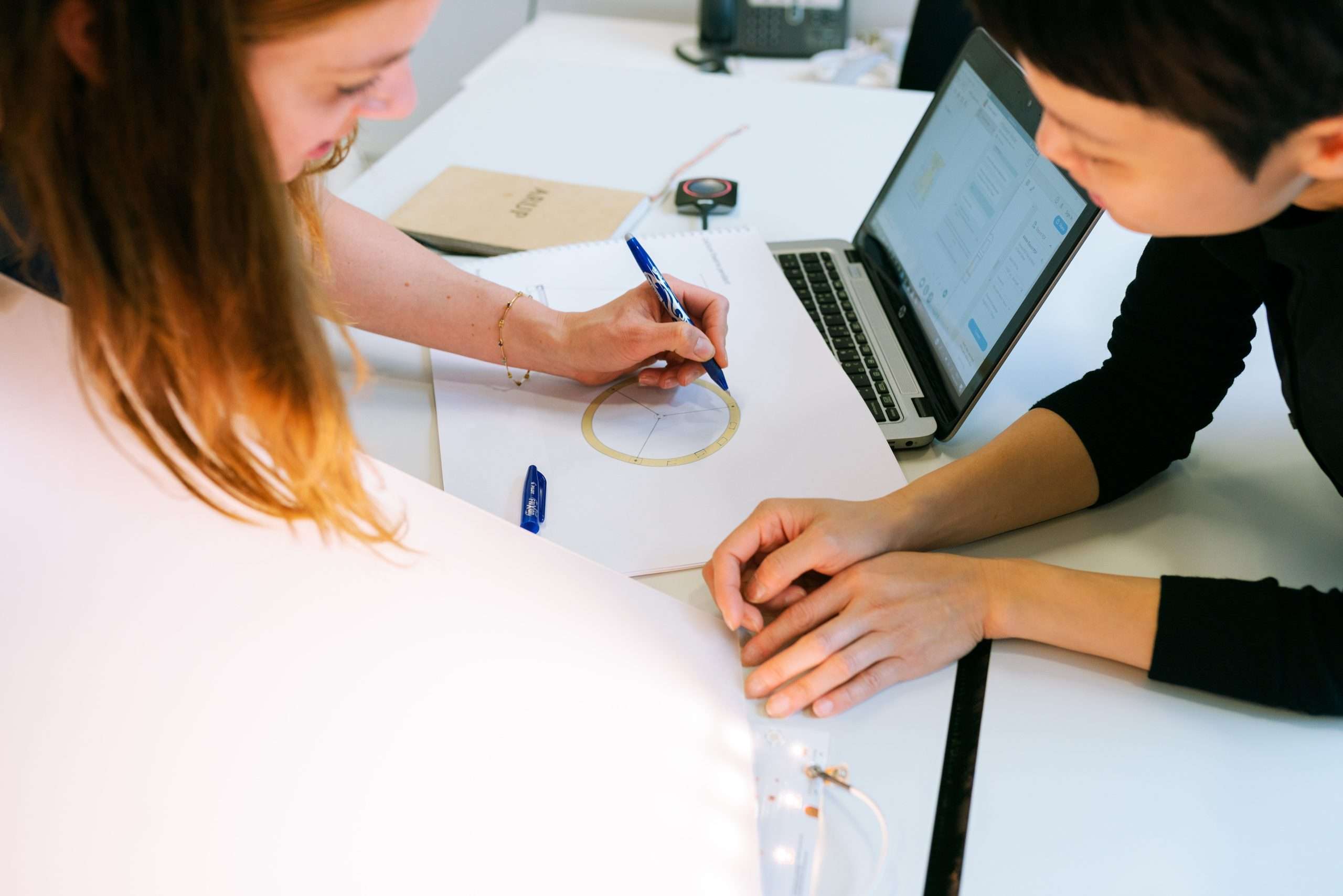In the fast-paced and ever-evolving world of design, feedback is an essential component for continuous improvement. Designers rely on feedback to refine their creations, enhance user experiences, and align their work with business objectives. However, as technology advances at an unprecedented rate, so does the range of tools available for gathering and managing design feedback. To navigate this landscape efficiently in 2023, it is crucial to identify the most effective tools that not only streamline the feedback process but also provide comprehensive insights and facilitate collaboration between designers and stakeholders. In this article, we will explore three indispensable design feedback tools that are set to revolutionize the industry in 2023, empowering designers to create exceptional experiences while minimizing time-consuming iterations and miscommunication.
The importance of design feedback in 2023
In 2023, the importance of design feedback cannot be overstated. With rapidly evolving technology and changing user preferences, designers need timely and constructive feedback to ensure their designs are effective and meet the needs of their target audience.
To streamline the design feedback process in 2023, there are three essential tools that every designer should have: collaborative prototyping software, automated feedback analysis tools, and real-time collaboration platforms. Collaborative prototyping software allows designers to share their work with stakeholders and gather feedback in a centralized location. This not only saves time but also ensures everyone is on the same page throughout the design iteration process.
Automated feedback analysis tools have become increasingly popular in recent years as they provide designers with valuable insights into user opinions without requiring extensive manual analysis. These tools use natural language processing algorithms to analyze comments and suggestions from users or stakeholders, providing actionable recommendations for improvements.
Real-time collaboration platforms enable designers to communicate and receive immediate feedback from team members or clients regardless of geographical location. This fosters efficient communication channels, driving faster decision-making processes while ensuring that all parties involved have a say in refining the design.
By leveraging these three indispensable design feedback tools in 2023, designers can enhance their workflow efficiency, improve user satisfaction, and ultimately deliver exceptional designs that cater to emerging trends and expectations.

Tool 1: Collaborative design platforms
Collaborative design platforms have become an essential tool for designers in 2023. These platforms allow multiple team members to work together on a single design project, regardless of their physical location. This not only saves time but also enhances collaboration and creativity within the team. With real-time editing and commenting features, designers can provide feedback and make changes simultaneously, making the entire process more efficient.
One popular collaborative design platform is Figma. It offers a seamless experience for teams to brainstorm ideas, create prototypes, and iterate designs collectively. Its cloud-based nature allows team members to access and contribute to projects from anywhere with internet connectivity. Figma also provides version control capabilities, ensuring that all changes are tracked and easily reversible if needed.
Another valuable collaborative design platform is Miro. This digital whiteboard tool enables teams to ideate, wireframe, and present their designs in a visually engaging manner. Its vast range of templates makes it easy for designers to start their projects quickly while encouraging collaboration through real-time editing and commenting functionalities. With Miro’s integrations with other popular tools like Slack or Jira, teams can seamlessly incorporate their design processes into existing workflows.
In conclusion, collaborative design platforms play a crucial role in streamlining the design workflow by facilitating real-time collaboration among team members regardless of their location.
Tool 2: User testing and feedback tools
User testing and feedback tools are essential for improving the user experience of a digital product. In 2023, there are three key tools that stand out in this domain. The first tool is UsabilityHub, which offers various tests such as preference tests, click tests, and navigation flows to gather valuable feedback from users. It provides real-time results and insights into how users interact with a design, enabling designers to make data-driven decisions.
Another powerful user testing and feedback tool is UserTesting. This platform allows designers to test their designs with real users through remote usability testing sessions. Designers can set specific tasks for users to complete while observing their interactions and listening to their thoughts aloud. The platform also enables screen recording and heatmaps analysis, providing comprehensive insights into user behavior.
Lastly, Maze is a popular user testing tool that integrates seamlessly with design software like Figma or Sketch. It allows designers to create interactive prototypes and conduct usability tests within these platforms. Maze gathers quantitative data on task success rates, time spent on each task, and other metrics crucial for informed decision-making.
Overall, these three user testing and feedback tools offer an effective way for designers to collect valuable insights from real users in 2023, facilitating continuous improvement of the digital products they create.

Tool 3: Design prototyping and iteration tools
Design prototyping and iteration tools play a crucial role in the design process, allowing designers to create interactive and realistic representations of their ideas. These tools enable designers to collect feedback from stakeholders and users, helping them refine their designs and iterate on their concepts. In 2023, there are several top-notch prototyping and iteration tools that every designer should have in their toolkit.
One such tool is Framer X, a powerful design tool that combines visual editing with code-based interaction capabilities. With Framer X, designers can create high-fidelity prototypes that closely resemble the final product. Its intuitive interface allows for seamless collaboration between designers and developers, making it an essential tool for cross-functional teams.
Another noteworthy tool is Adobe XD, which has gained popularity for its simplicity and ease of use. With its extensive library of interactive components and advanced prototyping features, Adobe XD empowers designers to quickly bring their ideas to life. The ability to easily share prototypes with stakeholders further facilitates effective collaboration and feedback collection.
These design prototyping and iteration tools not only streamline the design process but also enhance communication among team members. By using these cutting-edge tools in 2023, designers can expect improved efficiency in creating user-friendly interfaces while receiving valuable feedback throughout the entire design journey.
Benefits of using these three tools together
Using the right design feedback tools can greatly enhance the efficiency and effectiveness of your design process. By combining three powerful tools together, you can unlock a range of benefits that will help you create better designs and streamline collaboration.
The first tool that is essential for any designer in 2023 is Figma. This cloud-based design platform allows for seamless collaboration, real-time editing, and easy sharing of designs. By using Figma as your primary design tool, you can ensure that everyone on your team has access to the latest version of the design, reducing confusion and saving time. Additionally, Figma’s built-in commenting feature enables effective communication and feedback exchange among team members.
In combination with Figma, using Maze as a user testing tool can be highly advantageous. Maze allows designers to test their prototypes with real users quickly and easily. By leveraging this tool alongside Figma, designers can gain valuable insights into how users interact with their designs, identify pain points or areas for improvement early in the process thus enabling them to make data-driven decisions for enhancing user experience.
Lastly, integrating Notion into your workflow completes the trio of essential tools for design feedback in 2023. Notion acts as a centralized hub where teams can organize their projects, collaborate on documentation or knowledge sharing efforts seamlessly. Its flexible structure empowers teams to tailor it according to their specific needs while allowing easy integration with other tools like Figma and Maze.

How these tools are shaping the future of design feedback
Design feedback plays a crucial role in the iterative process of creating and refining design solutions. In 2023, three essential design feedback tools have emerged as game-changers in shaping the future of design feedback.
The first tool is AI-powered sentiment analysis, which revolutionizes how designers gather and analyze feedback from users. By employing natural language processing algorithms, this tool can automatically detect emotions and sentiments expressed in written or spoken feedback. Designers can then gain valuable insights into users’ reactions, preferences, and pain points, enabling them to make informed decisions to improve their designs.
The second tool is collaborative prototyping software that allows multiple stakeholders to provide real-time feedback on interactive prototypes. Gone are the days of static images or PDFs for presenting designs; with this tool, designers can create dynamic prototypes that simulate user interactions. Stakeholders can leave comments directly on specific elements within the prototype, facilitating clear communication and streamlining the feedback process.
Lastly, virtual reality (VR) technology has become an indispensable tool for immersive design reviews and user testing sessions. Designers can now create virtual environments where users can interact with their designs as if they were real products or spaces. This enables more realistic user testing scenarios and provides designers with invaluable insights into user behavior and preferences within a simulated environment.
These three tools are transforming how designers collect feedback by streamlining communication processes, enhancing collaboration among stakeholders, and providing more realistic testing environments—all contributing to more effective design iterations in the future.
Conclusion: Embrace the power of design feedback in 2023
In conclusion, embracing the power of design feedback is crucial in 2023 for staying ahead in the competitive market. There are three essential design feedback tools that will be indispensable for designers and businesses alike. Firstly, usability testing platforms like UserTesting will continue to play a significant role in gathering valuable insights from real users. This tool allows designers to observe user behavior, identify pain points, and make informed design decisions.
Secondly, collaborative design tools such as Figma will remain essential for receiving feedback from team members and clients. These tools enable multiple stakeholders to collaborate seamlessly on design projects, providing real-time feedback and facilitating effective communication.
Lastly, analytics tools like Hotjar will continue to be invaluable for understanding user behavior on websites or applications. These tools provide heatmaps, session recordings, and conversion funnels that help designers make data-driven decisions based on actual user interactions.
By utilizing these three key design feedback tools – usability testing platforms, collaborative design tools, and analytics tools – businesses can ensure their designs resonate with users’ needs and preferences in 2023.



